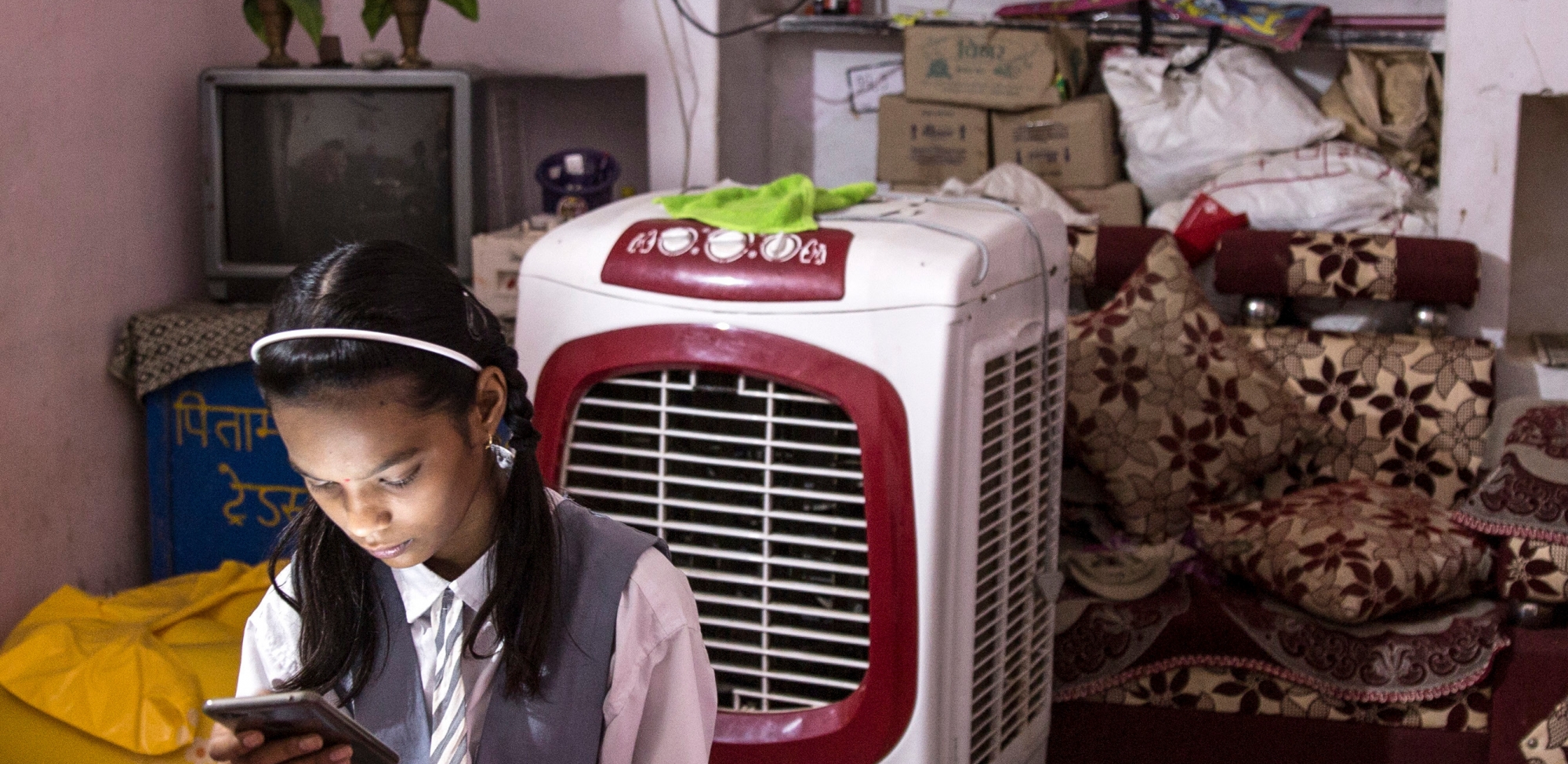Pathways for Prosperity Commission. (2018). Digital Lives: Meaningful Connections for the Next 3 Billion. Oxford, UK: Pathways for Prosperity Commission.
The Commission’s major report Digital Lives: Meaningful Connections for the Next 3 Billion explores how people in developing countries are actually using digital services. The report highlights how digital exclusion can exacerbate existing inequalities and how countries can ensure marginalised people, including women and those without education, are not left further behind.
This report is guided by two central truths. One: digital technologies are rapidly revolutionising many aspects of life as we know it. Two: not everyone benefits from access and effective usage of these technologies. Women, people with low levels of education, people living in poverty, and rural communities often benefit less from the great opportunities of digital technology. Unless we are deliberate about empowering these already marginalised groups to participate in our increasingly digital economies, societies and political systems, new digital opportunities may only magnify inequality and exclusion.
As basic services become increasingly digitalised globally, there is a risk that disadvantage will become further entrenched as the marginalised are left further behind. It's critical to consider how people actually use digital services. Digital exclusion – both in terms of access and usage – is real. Digital inclusion matters.
Access is becoming more a problem of economics than geography. As coverage becomes almost universal, the challenge is less about the “last mile” – but about finding business models that make it profitable to serve the lowest income consumers.
The choices made by businesses and governments will shape digital access and usage. These 'digital architectures' can alter and manipulate peoples' digital lives.
Government, the private sector and civil society must establish the rules and norms to shape inclusive digital architectures that benefit people living in poverty and marginalised men and women.
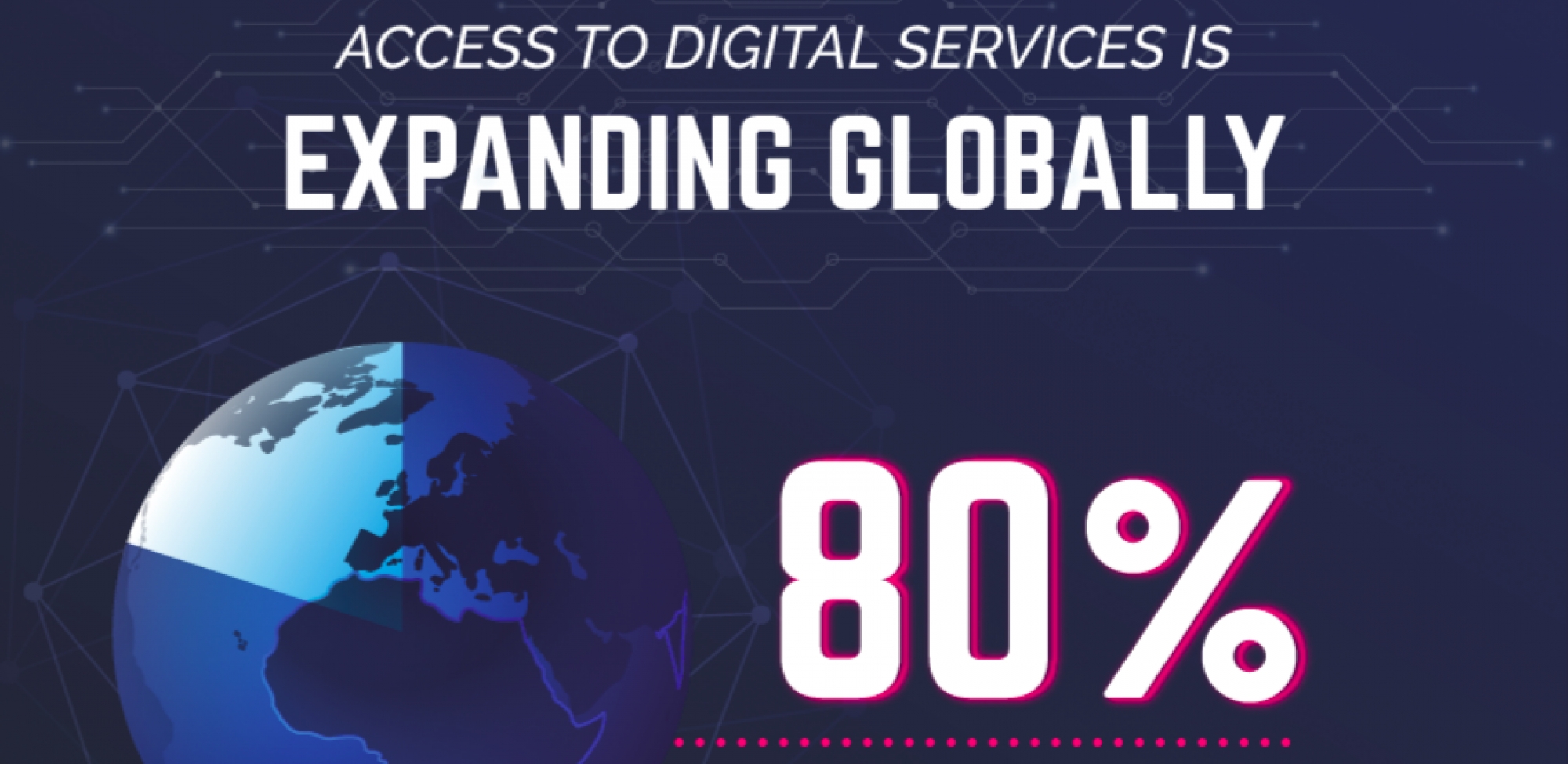
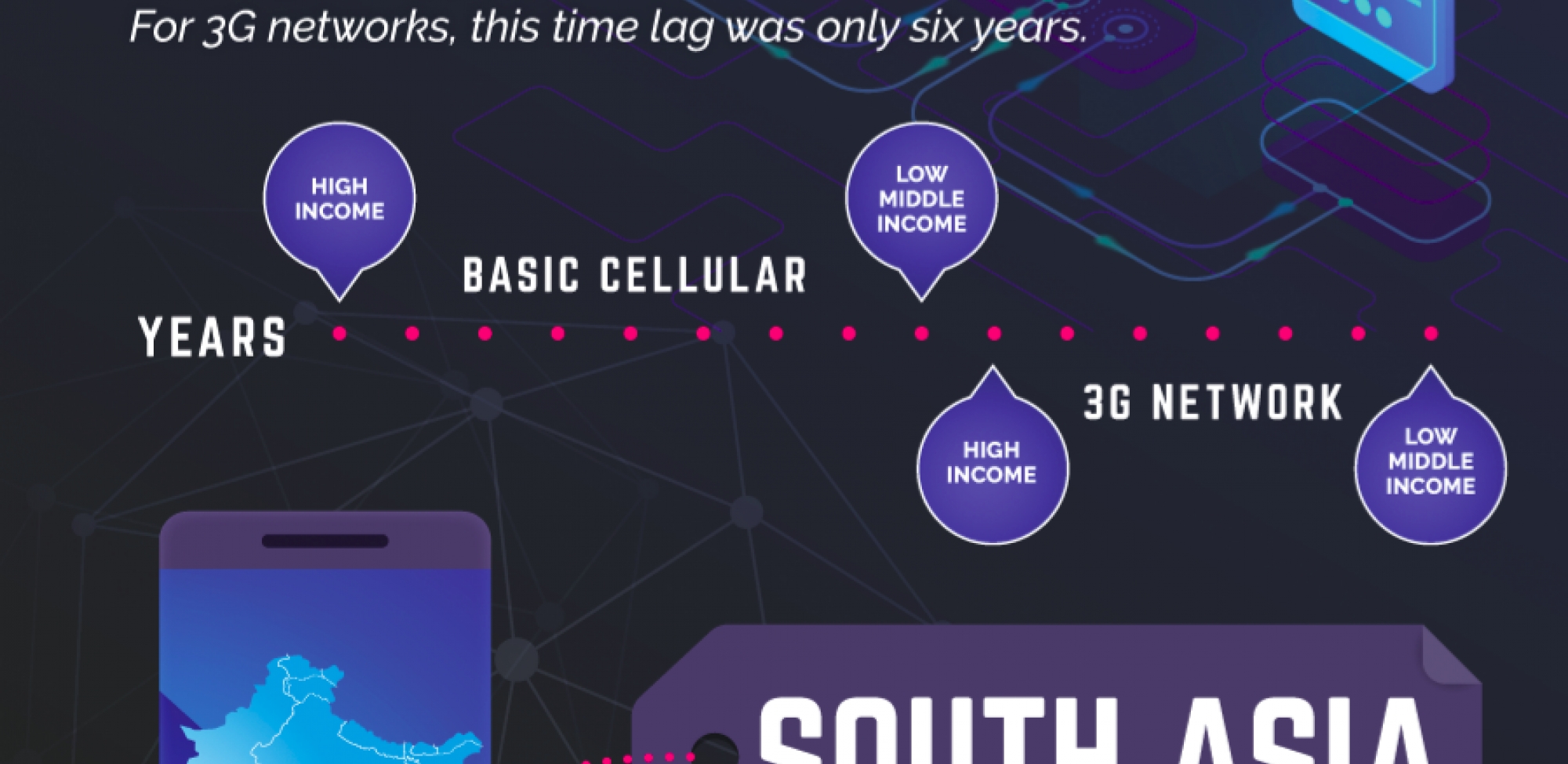
Digital services are connecting people in developing countries to knowledge, jobs, businesses, their governments and to other people. Digital platforms have connected more than a million self-employed motorbike drivers in Indonesia to customers, and allow Indian citizens to safely and instantly report bribery. Simple SMS reminders are improving the quality of treatment and thereby health outcomes for people living with HIV in Nigeria, Cameroon and Brazil.
There has been great progress over recent decades in expanding networks – with 80% of the population covered across even low-income countries. Yet barriers to access remain considerable. Despite the expansion of cellular networks, less than 12% of the population in low-income countries use the internet. But even at current growth rates, three billion people in developing countries will not be using the internet by 2023. There is still much work to realise the great potential of digital access.
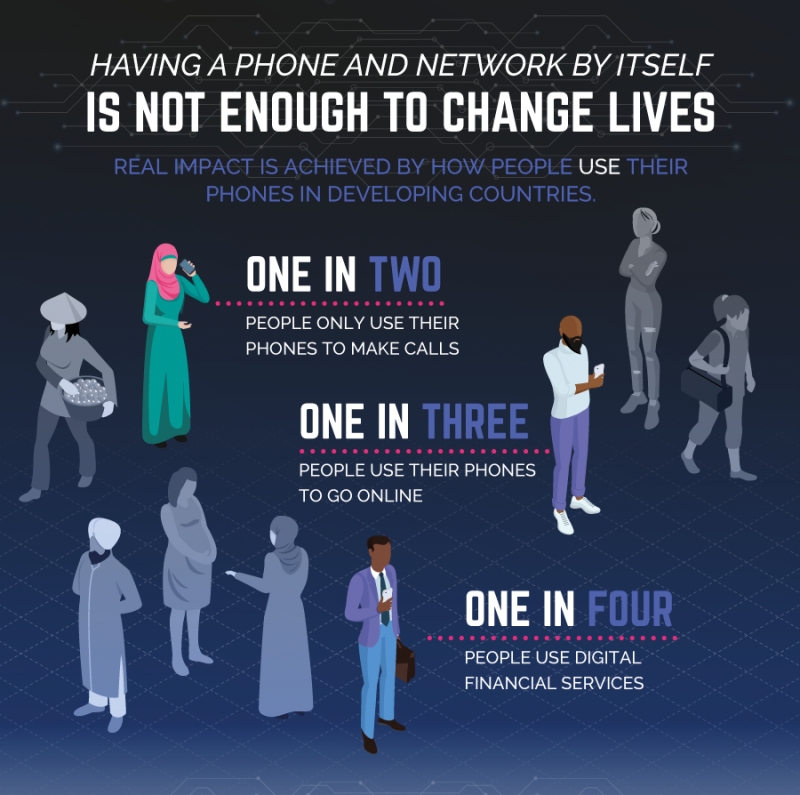
Impact is ultimately determined by usage; access alone is not sufficient.
The global debate focuses significant attention on access – closing the infrastructure gap and connecting the unconnected. But we find that the gap in usage among those who have a connection is equally problematic; only a minority of people in developing countries actually use digital services. Almost everyone has made a phone call at some point in their lives, but usage drops off rapidly for more complex digital functions. Even the most rudimentary of digital services, such as SMS, are not being used by the majority of people.

In our series on the rural women of Tanini in Indonesia, we speak to Ela, who's in her late teens, about her access to electricity, the internet and mobile phone coverage, as well as her future aspirations.
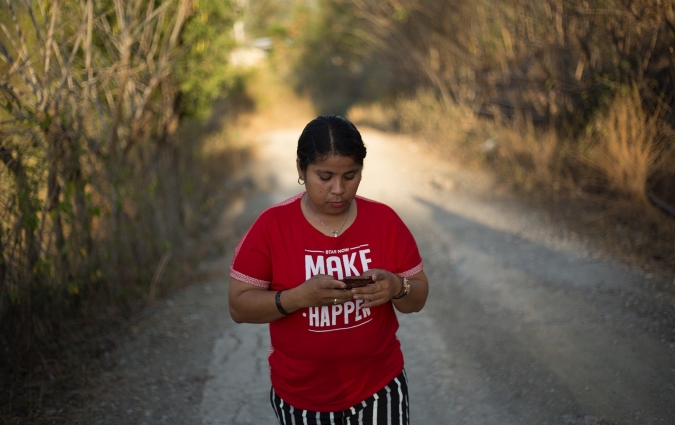
Yanti is a teacher in the Indonesian village of Tanini, she needs to walk 3-5km for good mobile phone signal, and uses the internet to support her knowledge and her students' learning about the world.
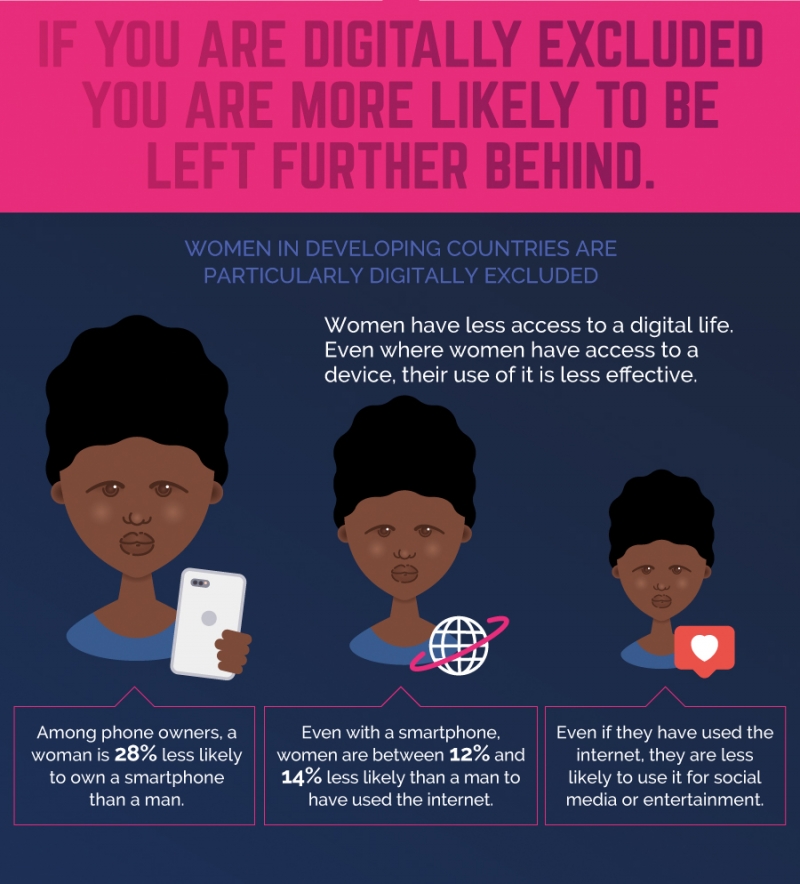
Digital exclusion – both in terms of access and effective usage – is not random; it mirrors, and risks exacerbating, long-established inequalities. People with limited education, women, and those in poverty are the least likely to benefit from digital technology. In Pakistan, women are half as likely as men to own a phone. People without secondary education are less than a third as likely to have used the internet than the rest of the population. Even for those who do own a phone, or who have used the internet, the inequalities persist in terms of the amount of usage.
This is driven by a number of factors: lower-educated groups are excluded due to a lack of basic literacy or digital skills, women are excluded by restrictive social norms, people who live in rural areas can be excluded due to limited infrastructure. Unless these fundamental barriers are addressed, the marginalised will remain excluded from the benefits of a fulfilled digital life.
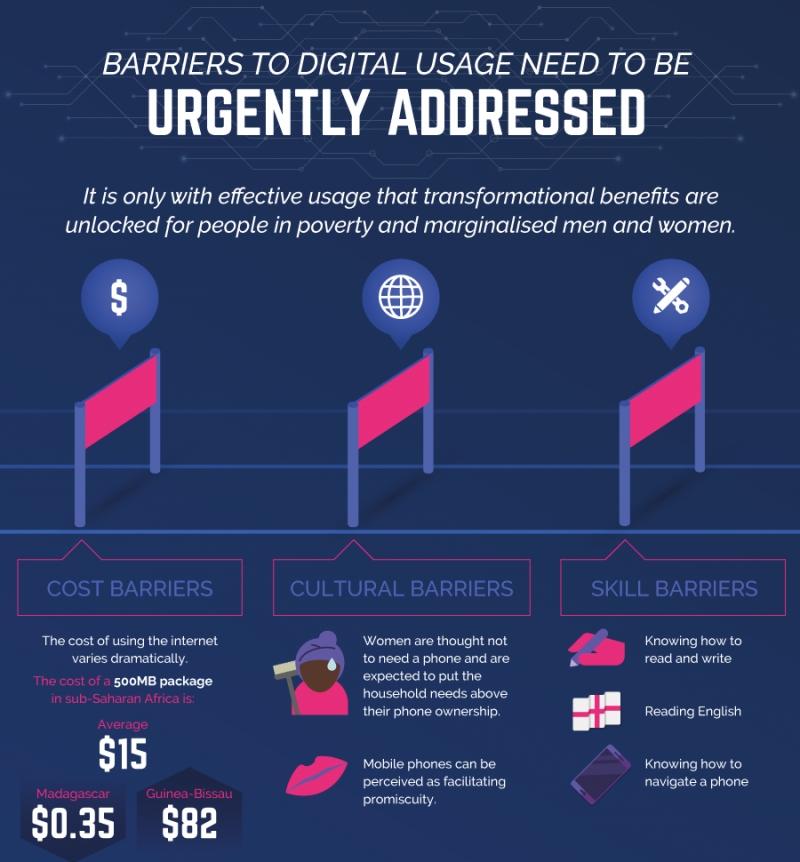
The choices made by businesses and governments will shape digital access and usage.
Digital architectures – the choices made by businesses and government and the ecosystem that emerges – are the fundamental background forces that shape the types of digital lives available. Connecting people in poverty is predominantly a matter of affordability, but the business-as-usual approach – setting prices to recover infrastructure investment – will never be affordable for the poorest in society.
Ideally, people would be connected to a rich offering of digital services that are locally relevant and contribute meaning and benefit to the user’s life.
Looking beyond the price of digital services, the design of these services will also influence user behaviour. There is no perfect model for digital service design, but it is incumbent upon business, government and citizens to contribute to shape this digital architecture. Connection is not valuable in and of itself; so, the question becomes, what are people being connected to?
Government, the private sector and civil society must establish the rules and norms that shape digital architectures. Few developing countries have a clear approach to this foundational question of digital governance, and even fewer, if any, have a clear approach to regulating digital design and user protection.
This might be an opportunity where business and civil society can take the lead in developing trustworthy and transparent digital services. Nudging the design of digital services in a pro-user direction should lead to richer digital lives for all.
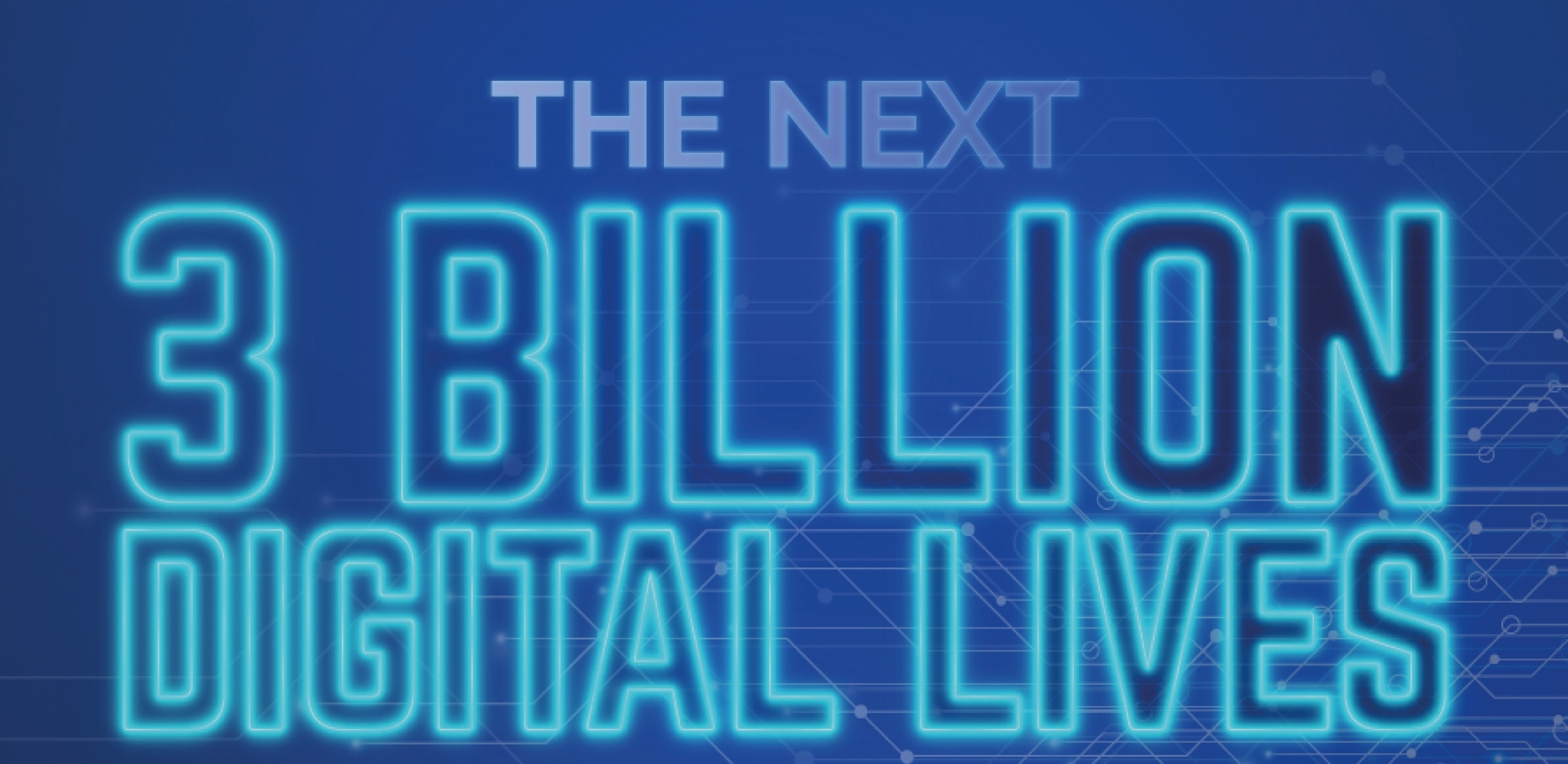
#TheNextThreeBillionDigitalLives
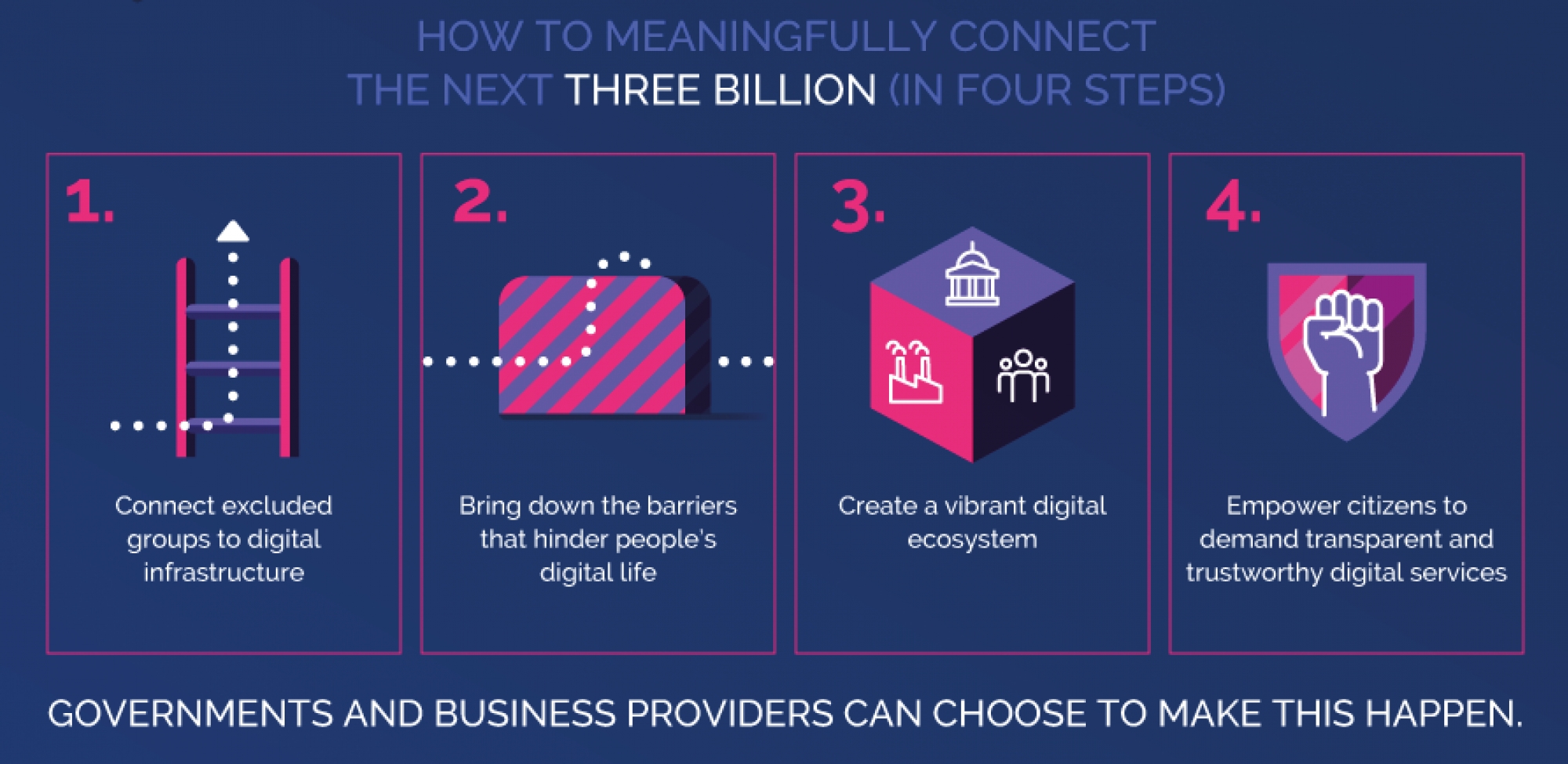
The challenge ahead is clear: connect the next three billion users to a positive, productive and fulfilling digital life. Everyone can contribute to realising these priorities – citizen or cabinet minister, entrepreneur or corporation.
1. Drive access to the poorest and those facing exclusion, by investing in hard infrastructure and developing new business models.
2. Address the fundamental barriers that prevent take-up and effective usage, by addressing restrictive social norms and investing in basic and digital education.
3. Encourage innovation and a dynamic ecosystem of digital services, by building soft infrastructure and sensible regulatory frameworks.
4. Push for transparent and trustworthy digital services, by empowering users to understand and control their digital lives.
Now is the time to create the digital architectures for the future.
Digital technologies offer such great promise to transform economies and societies, creating new opportunities for better service delivery in health, education and social protection, connecting people to loved ones, providing new pathways for economic growth and opening up new jobs and livelihoods. But, without concerted action to encourage inclusive access and effective usage, they will only entrench inequalities and leave marginalised people even further behind.
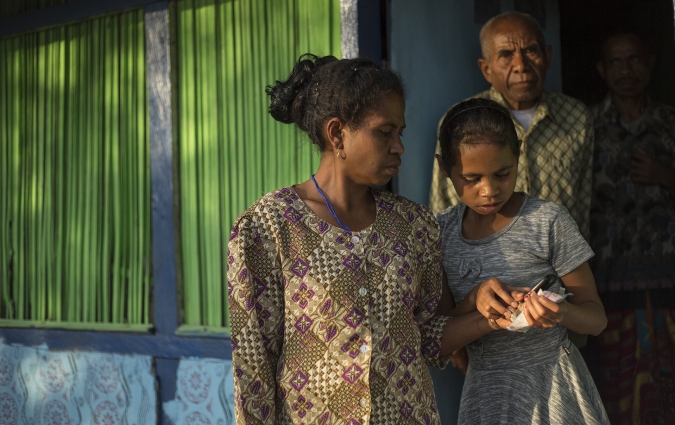
In our series of vignettes on the rural women of the Tanini village in Indonesia, we speak to Penina, who works far from home, doesn't have access or understand what the internet is, and finds topping up her mobile phone very expensive.
